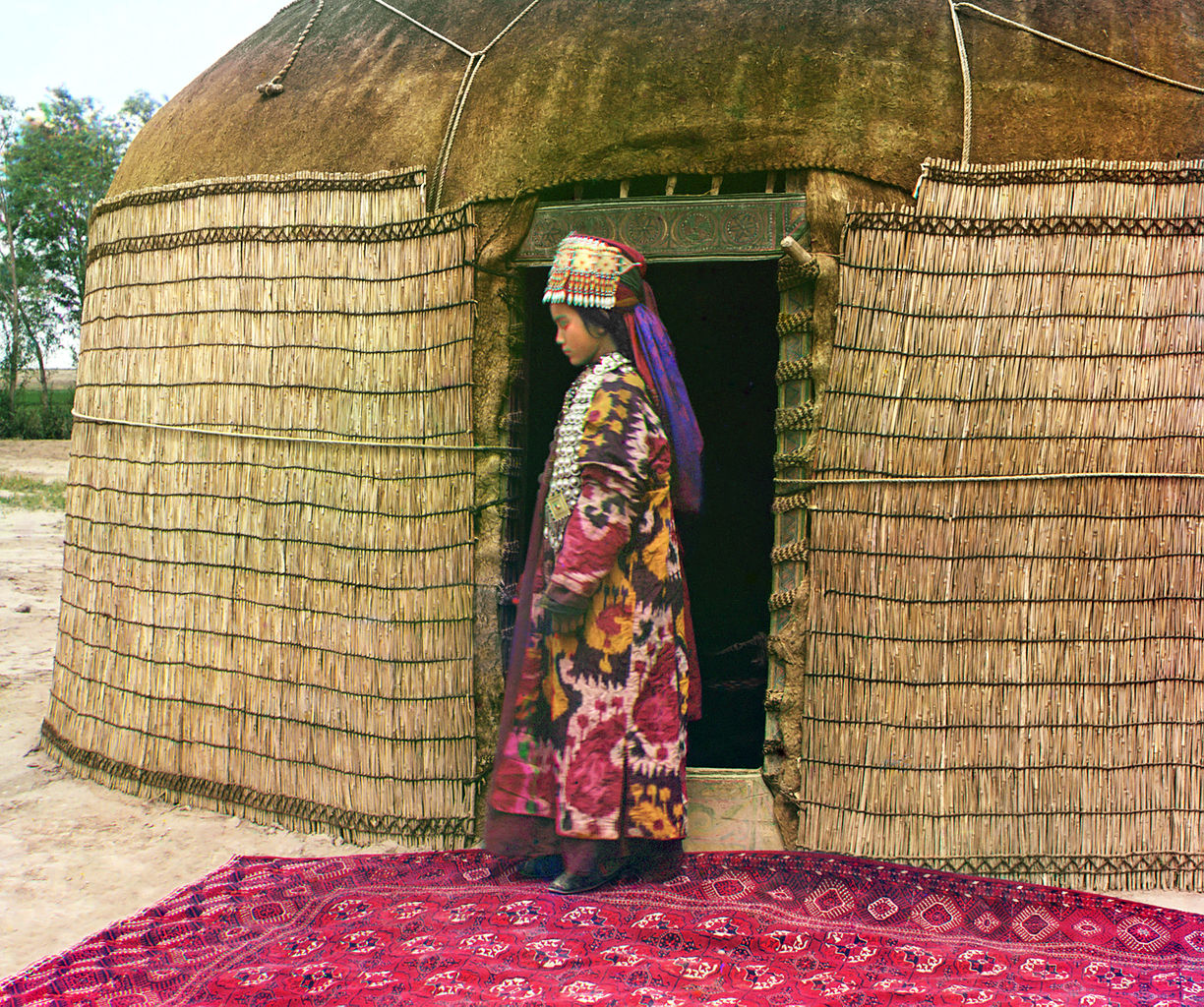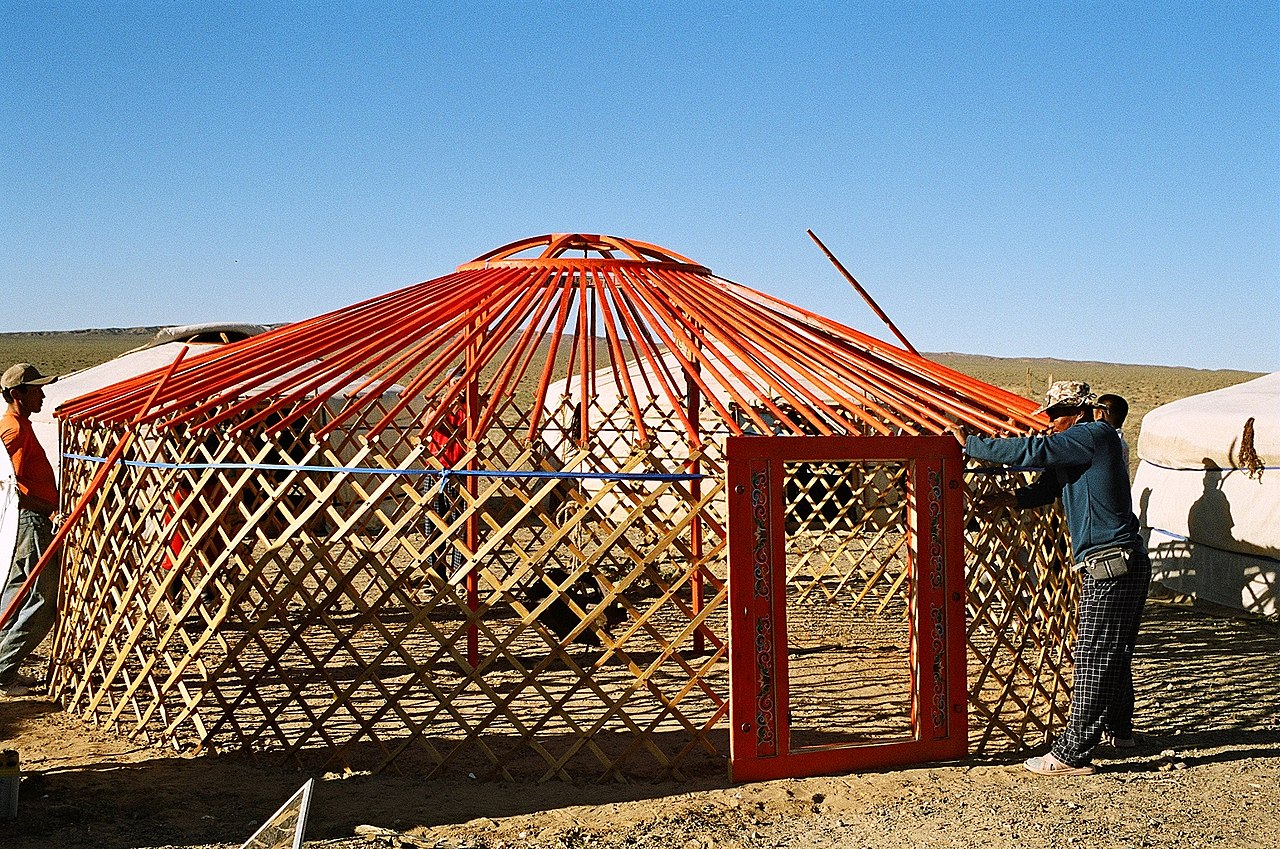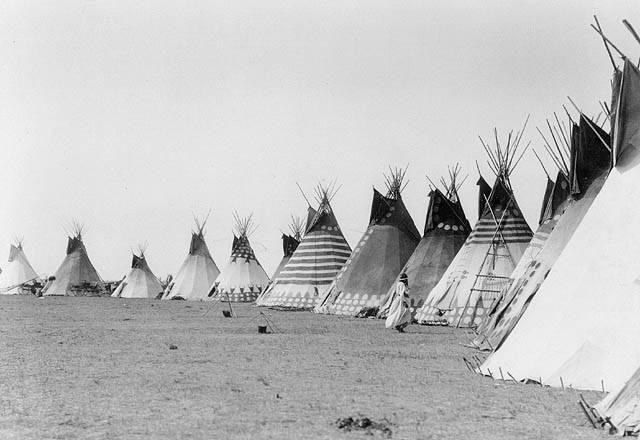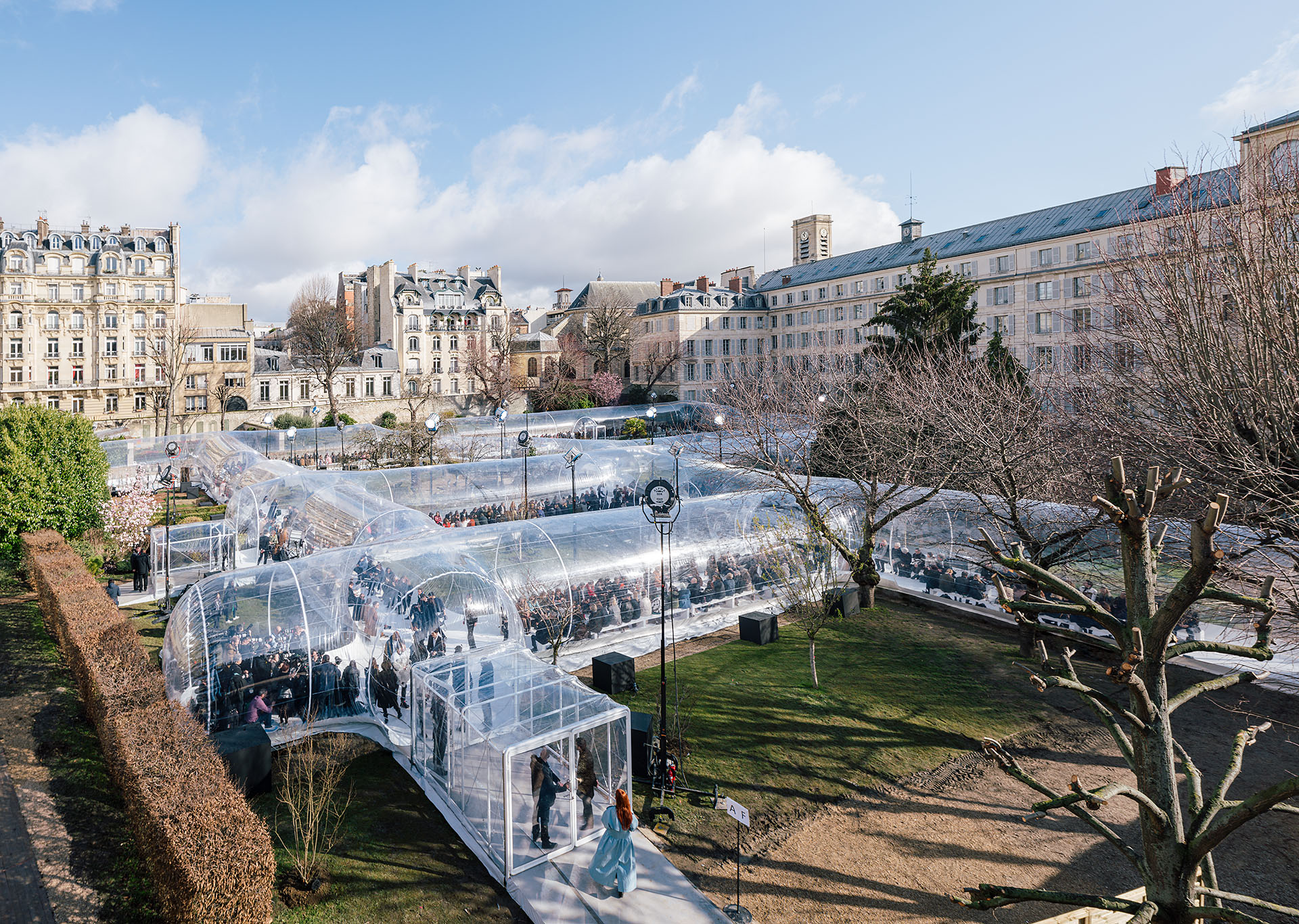
In February 2020, a famous clothing company organized a fashion show that was quite peculiar, not because of its designs or its models, but because it took place in a nomadic, adaptable and reusable building: The Pipeline. A large inflatable PVC structure that was developed with the aim of bringing infrastructure to those places (and moments) where it is needed.
In recent decades, architecture has reflected on an element that has always been present in the history of mankind: Nomadism. New lifestyles, the flexibilization of the concept of family, and the choice to work from anywhere in the world (and not always in the same place) have created new needs or reintroduced needs that had perhaps been forgotten.
During this time, engineering and architecture have come up with new ideas and solutions that are based, in many cases, on traditional nomadic constructions, such as the jaimas of the Sahara Desert or the yurts of the endless plains of Central Asia.
Nomadic dwellings of the present and the past
Our ancestors organized themselves in small itinerant groups that moved according to the rhythms of the seasons and nature until they began to grow their own food and, little by little, settle permanently. This is not true of all peoples, however. Many people maintain traditions based on movement. Indeed, it is estimated that there are at least 30 million nomadic people in the world today.

A Sami family in Norway in the early 20th century. United States Library of Congress (Wikimedia Commons)
Throughout history, different nomadic tribes have perfected architectural systems that are very much determined by the climate of their region, but with common characteristics: their constructions are temporary, simple to build (using techniques that are handed down from generation to generation) and based on local, lightweight materials that can be easily moved.
These characteristics continue to be pursued today in some areas of architecture and construction, such as in modular structures or structures based on prefabricated elements. Transportability, flexibility, constructive simplicity, speed and sustainability are terms to which we have become very accustomed nowadays.
Among the many traditional constructions that are erected in different regions of the world, and whose characteristics are still pursued today, we include yurts, teepees, jaimas and wigwam.
The yurts of the Central Asian steppes

Woman at the door of a yurt in 1911. Sergei Mikhailovich Prokudin-Gorskii Collection; Gorgo (Wikimedia Commons)
Yurts (also known by the Mongolian term ger) are traditional nomadic dwellings in countries such as Mongolia, Kyrgyzstan, Kazakhstan, Turkey and Russia (specifically Siberia). Yurts have been used over thousands of years. The most traditional have a circular floor plan, a roof made of wood and thatch, and sometimes wool tarpaulins (which are easily transported). This coating is reinforced in winter and is lighter in the warmer months.
The frame of a traditional yurt is based solely on a wooden framework that supports all loads, without the need for ropes or other elements. The upper part has a small circular opening that allows smoke to escape and light to enter. It is simple to construct and can be mounted by two or three people in a few hours.

Installation of a yurt in Mongolia. Hardscarf (Wikimedia Commons).
Many of today’s yurts retain the same shape, but are built with other, stronger and lighter materials. Today, yurts are a cultural symbol in many regions of Central Asia.
North American teepees

Teepees in the early 20th century. Photo by Arthur Rafton Canning; Amqui (Wikimedia Commons)
Teepees are the traditional dwellings of some native peoples of North America, such as the Sioux. They traditionally followed a nomadic lifestyle (some still do) and these constructions satisfied their needs insofar as they could be assembled, disassembled and stored easily and quickly and protected them from the cold of winter and the heat of summer.
These dwellings are based on several vertical wooden beams that are placed in a circle and converge at the upper end. The sides are covered with cloth or animal skins, depending on the climate and the time of year. Their floor plan is usually about three or four meters in diameter, meaning they can accommodate several people.
Peoples from different regions of northern Europe and Asia have erected very similar constructions, such as Chum in the Urals or the Lavvu and Goahti in Lapland. Other examples of very different nomadic architecture are the jaimas, typical of North Africa and adapted to a dry and desert climate, and the wigwam, traditional dwellings of North American villages that have the shape of a dome.
Moving people and changing cities
Today, the activity of the itinerant peoples is joined by that of other people who move for very different reasons: So-called digital nomads, professionals who can work from anywhere in the world and take advantage of this possibility to travel and live new experiences. This philosophy, which is not new (although the technology that allows it is), has coincided in time with trends that seek to rethink the idea of cities.
One of these trends focuses on the possibility of creating moveable buildings, which can be transferred to where they are needed when they are needed. This ensures spaces that fit exactly what is needed and which can have infinite uses.
Pipeline, the pneumatic structure that was used to house the peculiar fashion show in February 2020, is an initiative of the Spanish architecture studio DOSIS. It was installed in a park in the 5th arrondissement of Paris, the same place, they point out on their website, “where the Romans settled, René Descartes developed thoughts about geometry and philosophy, Pierre and Marie Curie strolled while sharing their views on radioactivity, and the Situationists practiced dérive [drifting, a walk or hike without a specific destination that leads to experiencing different social situations].”

The Pipeline installed in Paris in 2020. ImagenSubliminal (Miguel de Guzmán + Rocío Romero).
This PCV plastic structure has a total area of 1500 square meters and can be configured in different ways. In Paris, its forms followed one another in long corridors to serve as the basis for the fashion show. The same company has other inflatable projects which can be moved and used in all kinds of spaces.
One of them is Second Dome, a reconfigurable space that can transform from a single 65-square-meter bubble to a multi-space structure of more than 400 square meters in a matter of minutes. It was inflated in 2016 in east London to host community events for families and children, but could move to anywhere else in the UK or around the globe.





There are no comments yet